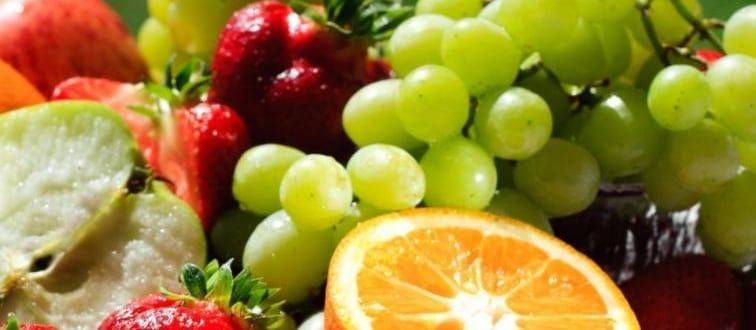
The rise in temperature brings about changes both in our mood and in practical matters of our daily life, such as nutrition. Each season has its own seasonal foods, and therefore its own dietary pattern! For example, Winter is accompanied by heavier and hotter foods, such as soups, foods with sauces, hot, because of our need to warm up. In summer, on the contrary, it includes more light meals and a wide variety of fruits and vegetables. It thus signals a diet full of antioxidants and vitamins!
How heat affects nutrition
Due to the increase in temperature, we have greater losses in fluids from the body, resulting in mild dehydration and the problems it creates, such as headache, fatigue, dizziness, a drop in mental function, etc. Especially on days that are hotter or when there is more intense activity, the losses are greater and need to be replenished through the consumption of liquids and foods that contain a high percentage of water, such as fruits and vegetables.
Fluid needs
The general population recommendation for fluid consumption is 9 glasses per day for women and 13 glasses for men (Mayo Clinic). On the hottest days when the losses are increased, it is recommended to increase the consumption by 1-2 glasses, which can reach 1 liter in case there is also some exercise. The recommendation applies to all liquids, i.e. water, tea, coffee, milk, herbs, juice, with an emphasis on drinking water and non-caloric liquids (for example, coffee and tea without sugar or honey, carbonated water, etc.). In the fluids we need daily, we can also include the water contained in fruits and vegetables, as some of them such as lettuce and cabbage contain water in a percentage of 94-96%!
To remember to drink water, you can always have a glass of water in front of you at home or in the office, which you will refill as soon as it is empty. If you are out of the house or at the gym, always have a water bottle with you. Do not forget that the feeling of thirst can be an indicator that there is already a mild dehydration in your body!
Food helpers at elevated temperature
The heat favors a diet pattern rich in fruits, vegetables, dairy, fish, seafood, lean meats and light cooking methods such as boiled and roasted.
When it comes to fruits and vegetables, the general recommendation of 5 servings of fruits and vegetables can be exceeded and you can even reach 7 servings or more. 1 portion corresponds to 2 fl green leafy vegetables or 1 fl chopped raw or boiled or 1 medium fruit or 2 small or ½ banana. With the rise in temperature we can enjoy cucumbers, artichokes, peas, corn, carrots, zucchini, cabbage, eggplants, broccoli, tomatoes, beets, peppers, green leafy vegetables, spinach, green beans, pears, apricots, cherries, plums, watermelon, apples , bananas, nectarines, cantaloupe, peaches, figs and strawberries.
The more variety you eat, the more vitamins and antioxidants you'll get. In addition, due to their increased water content, you can calculate that you are taking in about 1 glass of water from just 2 fruits! Include them in your daily routine as a snack, as a side dish or even as a light meal.
Dairy products such as milk, cheese and yogurt can reach 3 servings a day, where 1 serving corresponds to 1 glass of milk 250ml or 1 kesedaki yogurt 200g or 2 pcs of cottage cheese or 30g of white or yellow cheese. They also contain water and can contribute to your hydration. In addition, they are a good snack option accompanied by some whole carbohydrate, such as bread, toast or breakfast cereal, or some fruit. For example, your breakfast can be a smoothie with fruit, milk and a little honey or your dinner a yogurt with whole grain breakfast cereal and a fruit.
Emphasize eating fish and seafood which is more easy than in Winter, with an emphasis on oily fish such as sardines and mackerel for the omega-3 fatty acids they contain and small fish eaten with the bone for intake. calcium. Prefer them grilled or boiled in soup and avoid pancakes which are considerably heavier.
Finally, an important group of foods that we usually forget in the heat are legumes, as they are mainly consumed in the form of hot soup. However, due to their content in important ingredients such as fiber, folic acid and protein, we want them in our diet. An easy and enjoyable way to eat them is to make them in salad form, along with vegetables, other grains like rice and some protein like cheese or tuna!
So equip yourself with the necessary nutritional "weapons" for the rise in temperature!
Written by Eva Tsakou Dietitian - Nutritionist
article in https://www.eumedline.eu
